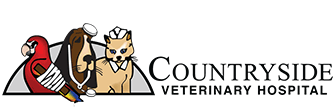Housetraining Your Puppy
Housetraining your puppy is one of the first and most important tasks you will undertake. It requires patience, consistency, and positive reinforcement. Mistakes should be expected as your puppy learns. Most puppies are fully housetrained by 4-6 months of age. There are individual and breed/size differences.
Our preferred method of housetraining is crate training. When properly introduced a crate can be a safe place for dogs to retreat. They can be used for housetraining, travel, safety, and for recuperation when sick or injured. Dogs are naturally denning animals and they typically will not soil in their den. This is the instinct we used for house training.
The size of the crate is very important during housetraining. It should be just large enough for your puppy to stand, turn around, lay on their side, and stretch out but no bigger than that or they may soil in one area and then move away from it. For large breed puppies, you can purchase a crate big enough for their adult size and use a divider as they are growing.
It is helpful to use a cue word like “crate” or “kennel” to train your puppy to go into the crate voluntarily. It is also a good idea to associate the crate with positive experiences such as eating their meals inside or regularly tossing toys or treats into the crate.
A crate should never be overused. Puppies should not spend the majority of their day in a crate. As a rough guideline, the maximum amount of hours a puppy should spend in their crate during the day is one more than the puppy’s age in months. During the night puppies can typically hold it longer.
For puppies who are not acclimating to the crate easily and actually seem to be getting more upset rather than less as time goes on, they may be suffering from separation anxiety. This is a serious condition that requires specific intervention and treatment.
Puppy pads can be helpful for the rare times you must leave your puppy alone longer than is appropriate for the crate, particularly a toy breed puppy. Your puppy should be confined in a small area like a bathroom or corner of the kitchen with a baby gate. Puppy pads should cover 50% of the area to assure they have a good chance of eliminating on the pad. Never put puppy pads inside a crate.
A consistent schedule is your best friend while house training. Meals and potty breaks should occur at the same times each day, as best you can. The goal is to have as many successful outdoor eliminations as possible. At first, you will find you are taking your puppy out very often. The most common time to take your puppy out is after eating or drinking (typically 15-20 minutes later). It is ok to offer water at set times instead of leaving it out all day as long as you are offering water with every meal and multiple times in between. There are other predictable times when your puppy may need to eliminate such as after waking up from a nap, chewing, or playing.
Take your puppy out to the same spot to eliminate each time. You may also want to add a cue word like “go potty” or “bathroom” each time your puppy eliminates outside. Once your puppy knows how to sit on command you can also ask them to sit at the door before you go out to potty. Over time, they will likely sit by the door when they need to go out.
When your puppy is successful in eliminating outside, make it a huge party! Use verbal praise and high-value food rewards (small pea-sized pieces of cheese, chicken, or hot dogs).
When inside, your puppy should be confined to their crate, another small area like an exercise pen, or within arms reach of an adult either on a leash attached to your or your chair or using baby gates or closed doors to keep them in your eyesight. The only time your puppy should be loose in the house is right after successfully eliminating outside. Start with 30 minutes of free time and add another 30 minutes for each week without an accident.
If your puppy does have an accident in the house and you catch them in the middle of it, clap or make another noise to interrupt them. Then rush them outside so they hopefully finish going to the bathroom outside and you can reward them.
If you find an accident after the fact, just clean it up with an enzymatic cleaner like Nature's Miracle or Equalizer and move on. There is no benefit in punishment as your puppy will not understand why they are now being punished. They only make an association if the punishment occurs instantly. Even though some people think their puppy looks “guilty” when they are punished after an accident, they are really just reacting to your tone of voice and facial expression.
Resources
Housetraining and Crate Training: What Every Owner Needs to Know
How to potty train your dog or puppy
How to Potty Train Puppies: A Comprehensive Guide for Success
House Training Your Puppy

